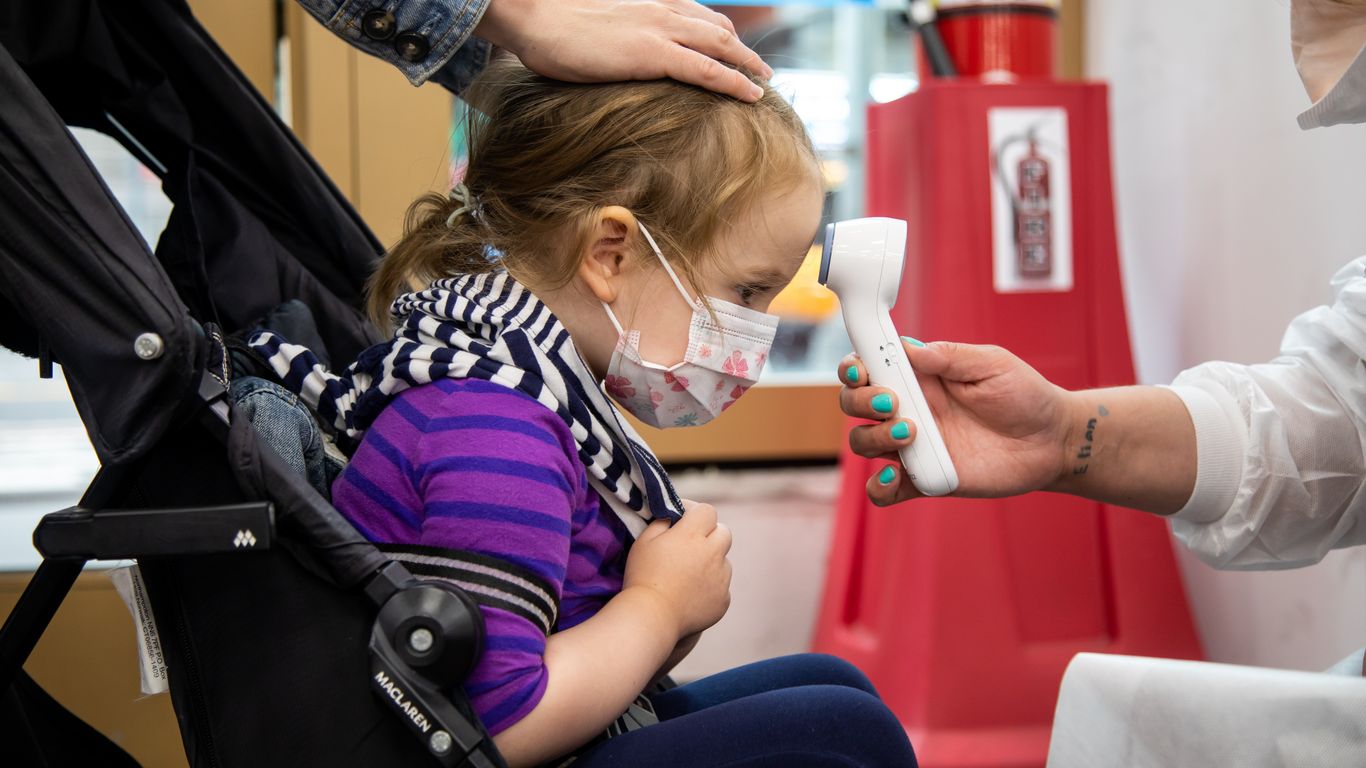COVID, flu and RSV in kids: Symptoms to watch and what parents need to know - Axios

There's nothing novel about a child coming home from school in November with a runny and stuffy nose or a cough. But for parents, the stakes feel especially high right now: Is it just a cold? The flu? Or are these tell-tale signs of RSV or COVID?
Why it matters: Some of the symptoms of the flu, the respiratory virus and the coronavirus are relatively similar, making it difficult for parents to distinguish between the illnesses as cases are spiking nationwide.
- And many Americans may be too COVID-fatigued to fret about the reality of a "tripledemic," Axios' Adriel Bettelheim reports.
Zoom out: Care could also be impacted by the national shortage of health care workers, which continues to exacerbate hospitals' workloads.
- Here's an overview of symptoms of RSV, the flu and COVID-19 in children — and what parents should know.
RSV symptoms in kids
- RSV is very contagious and a common illness in children, with most having had an RSV infection by their second birthday, per the Centers for Disease Control and Prevention.
- The symptoms include a runny nose, decrease in appetite, coughing, sneezing, fever and wheezing, per the CDC.
- Most RSV infections go away within a week or two, but the CDC recommends parents call their healthcare provider if their child "is having difficulty breathing, not drinking enough fluids, or experiencing worsening symptoms."
- The symptoms of RSV usually come on gradually and they show up within 4 to 6 days after becoming infected.
Flu symptoms in kids
- Symptoms of the flu typically come on suddenly, which is perhaps its biggest distinction from RSV, per Health Partners.
- Flu symptoms can include fever, cough, sore throat, runny or stuffy nose, body aches, headache, chills, feeling tired and sometimes vomiting and diarrhea, per the CDC.
- Flu symptoms typically develop about 1 to 4 days after being exposed to a sick person, per HealthyChildren.org.
- "Even healthy children can get very sick from flu," the CDC warns.
- The CDC says that parents should take their children to the emergency room if they are experiencing fast or trouble breathing, bluish lips or face, ribs pulling in with each breath and chest pain, among other symptoms.
COVID-19 symptoms in kids
- The most common symptoms of COVID-19 in children include fever and cough, but children can also experience sore throat, headache, fatigue or gastrointestinal symptoms, per the CDC.
Be smart: One of the best ways to protect your family is to stay up-to-date on your flu and COVID shots.
- The CDC also recommends parents get their child tested if they develop symptoms, as that is the best way to know whether it is the flu or COVID-19.
Go deeper... Threat of "tripledemic" looms with RSV, COVID and flu


Comments
Post a Comment